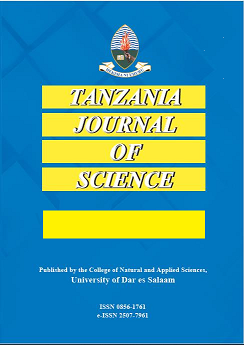Explicit Solutions for Real-time Reversible Inhibition Kinetics using Lambert W Function: Towards Progress Curve Analysis
DOI:
https://doi.org/10.4314/tjs.v48i4.15Keywords:
Enzyme, Lambert W function, Reversible inhibition, Closed-form solutionsAbstract
Accurate estimation of kinetic parameters is challenging due to the dynamics and mathematical nature of the chemical systems. This paper presents simple, yet efficient closed-form solutions for the enzymatic conversion of the substrate to the product in real-time derived using the Lambert W function. The real values of the Lambert W function were calculated from the Lambert package as implemented in MATLAB. The expressions exhibit remarkable robustness in estimating the parameters for randomized data at 1% to 4% variation in noise levels. Furthermore, unlike the initial rates method, the expressions estimate chemical kinetic parameters utilizing a full range of experimental data, thus minimizing the risk of missing information that would be detected at an extended time-span. Thus, the implementation of closed-form solutions presented in this paper for the estimation of kinetic parameters eliminates common pitfalls imposed by the initial rates and double reciprocal methods.
Keywords: Enzyme, Lambert W function, Reversible inhibition, Closed-form solutions


